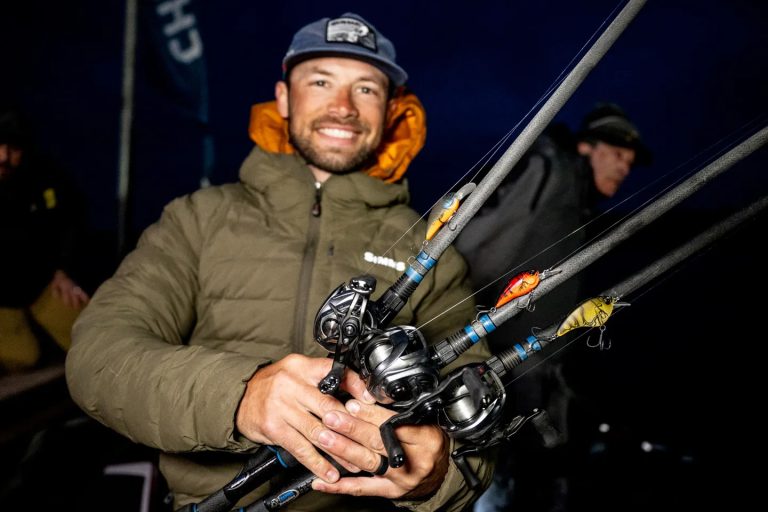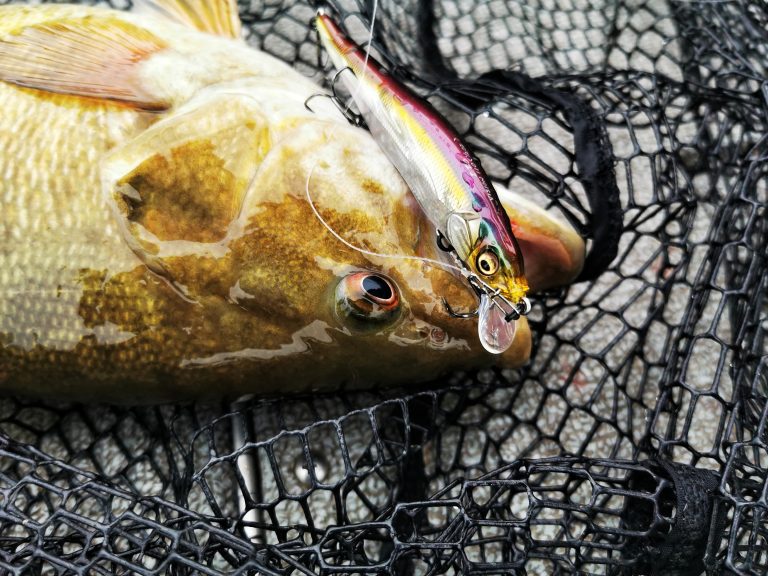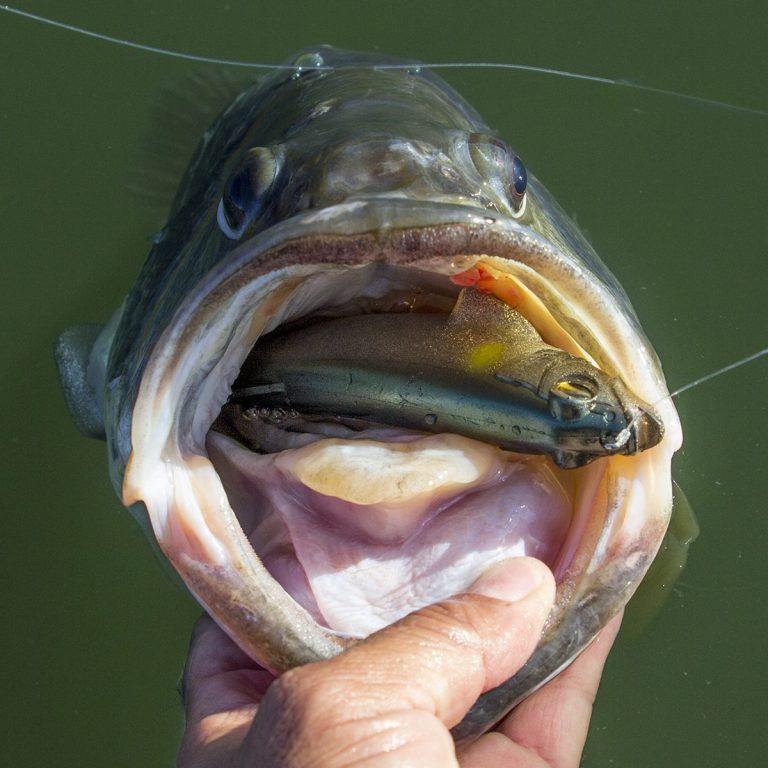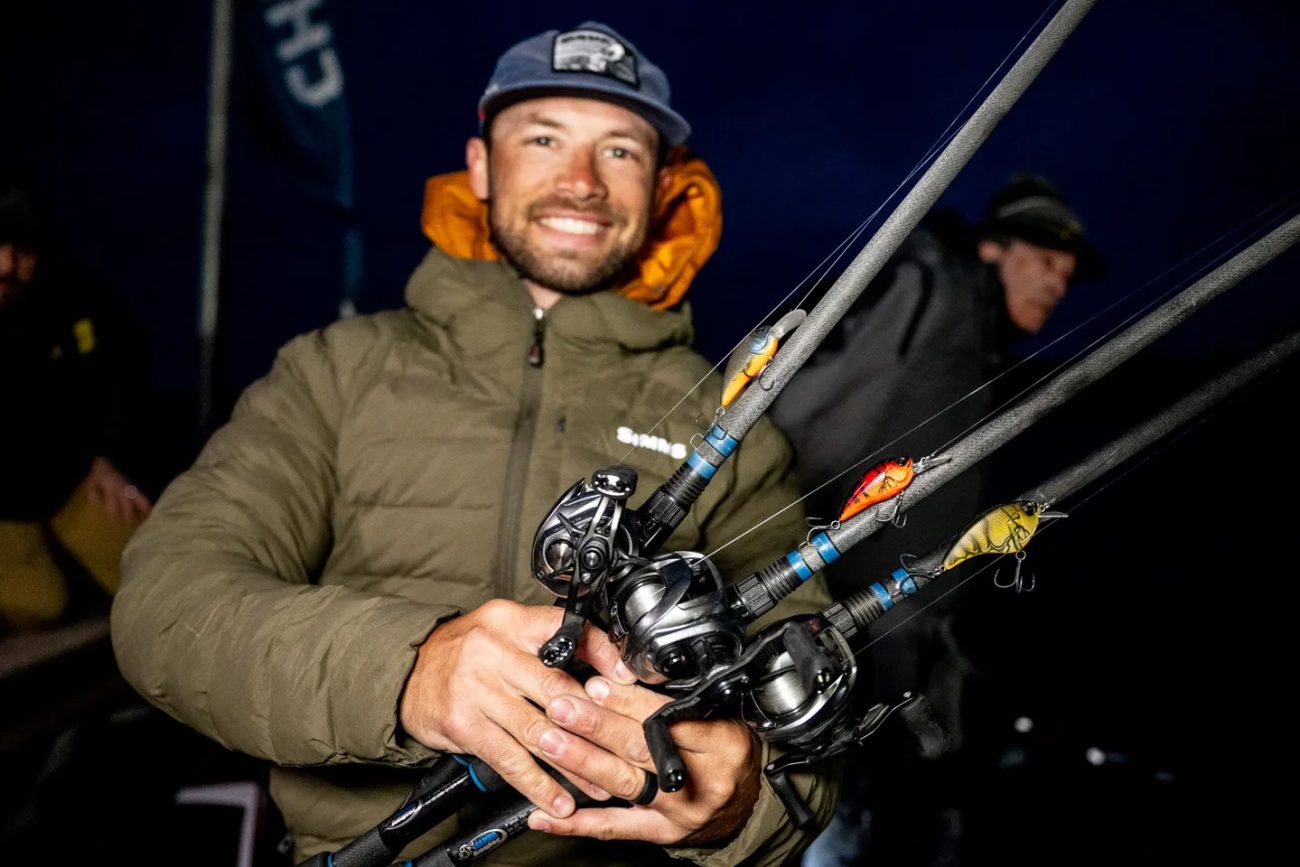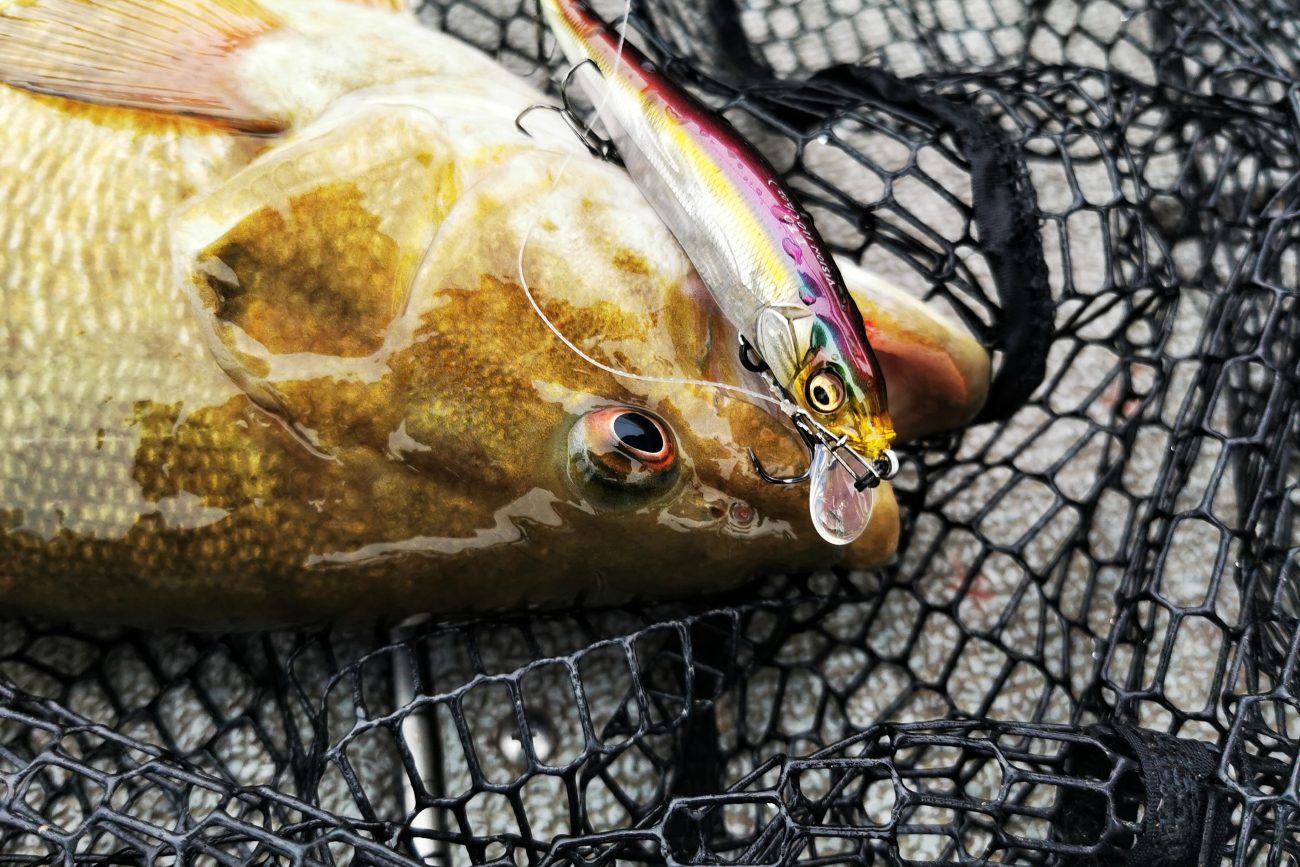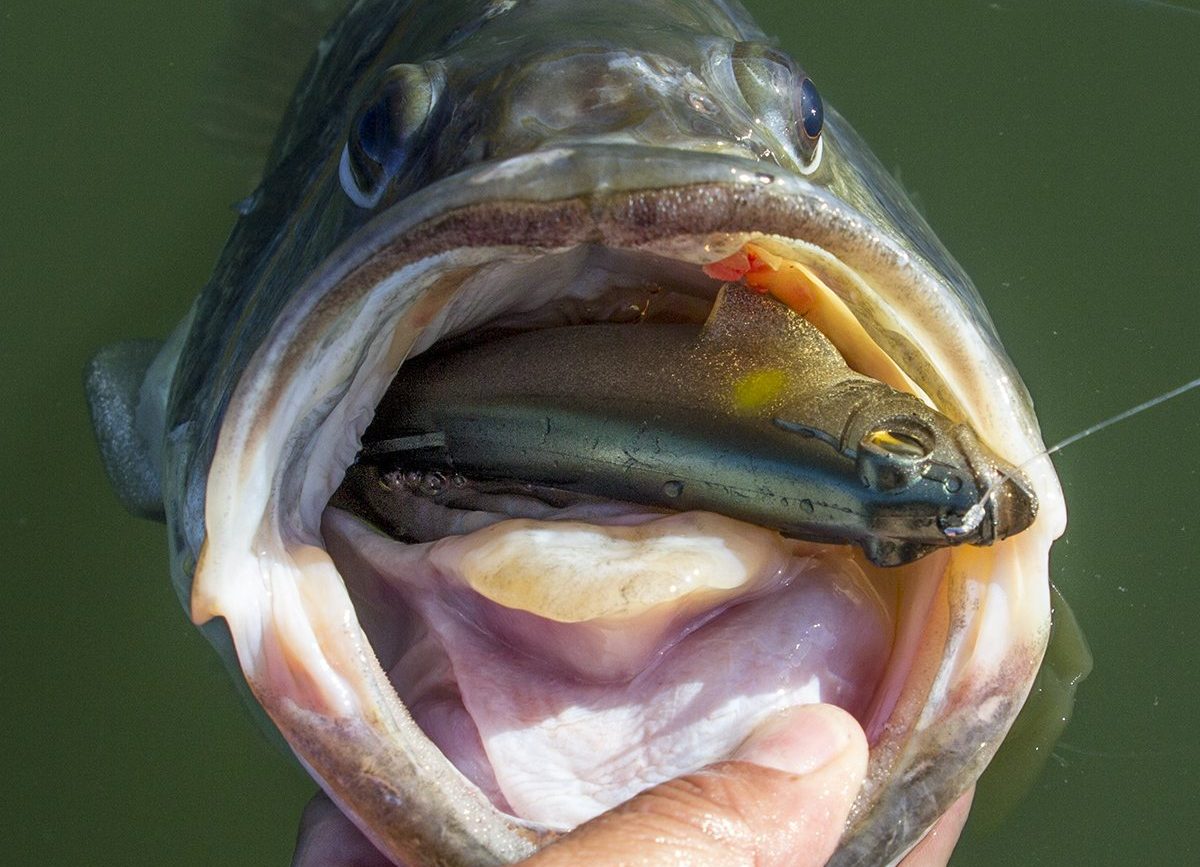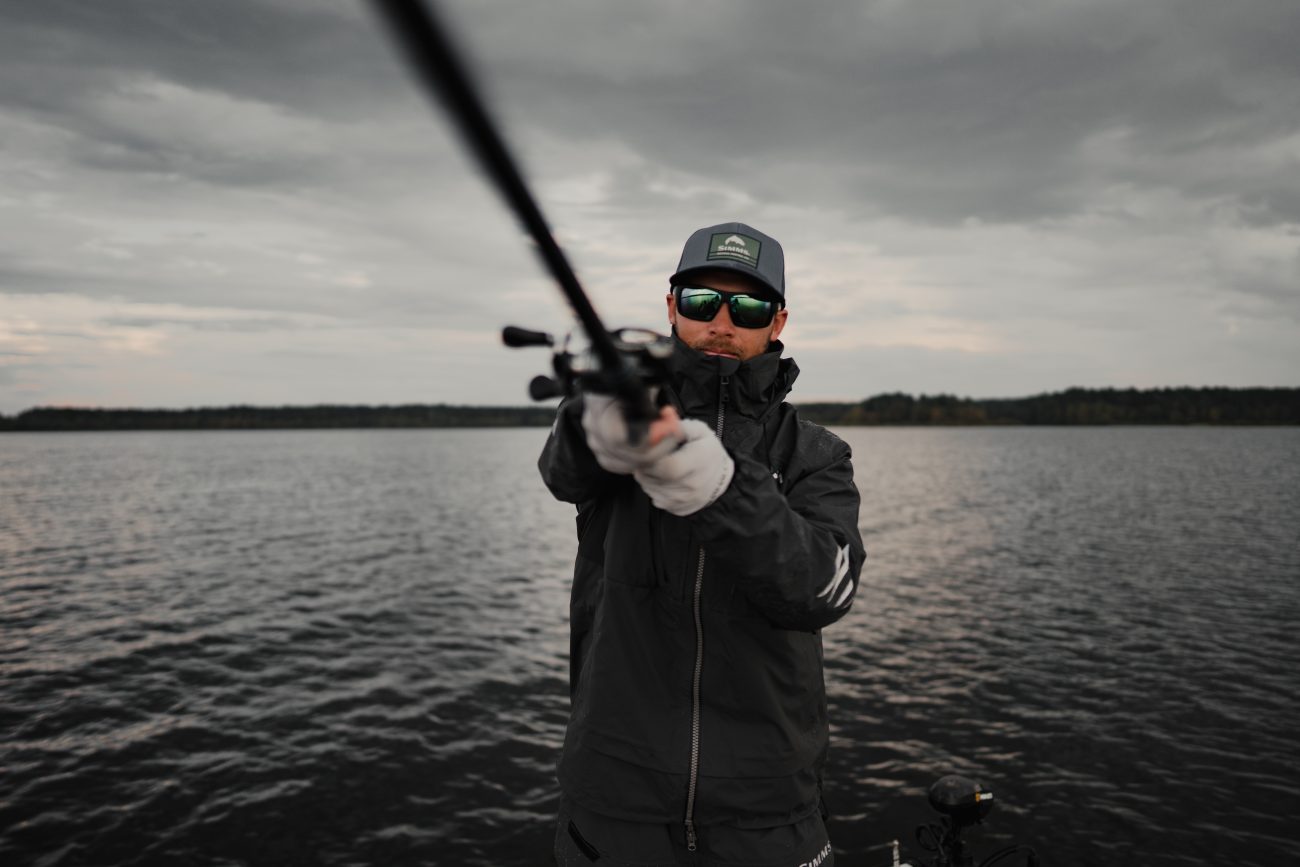“A big 6-, 7- or 8-inch gizzard shad has a lot more movement than a smaller threadfin shad,” the 2016 Bassmaster Classic champion explained. “Just by watching how they swim you can see the difference. The bass can feel that through their lateral line.” Throughout his travels and his decades as a competitor, Blaukat has learned that the preferred motion pattern doesn’t necessarily stay constant throughout the day. For example, on some of the Tennessee River impoundments during the early spring, he might encounter water in the high 40s to low 50s with 12- to 15-inch visibility to start the day. Typically, he’ll start with a tight wobble in those conditions, but if the sun comes out and there’s little wind, shallower fish-holding areas might warm up a few degrees, and at that point it often pays to switch to something a little bit more aggressive.
“I can’t stress enough that there’s often a fine line when it comes to combinations of water conditions,” he said. “If the clarity goes from 8 inches to 2 feet, or the temperature goes from 50 to 55, that’s when you need to make an adjustment. He said that it’s the same with sound, where under calmer, cooler conditions in the morning he tends to rely on silent baits and will then add a rattle if the wind picks up later. Later in the year, during the shad spawn, you might encounter bass that seem to be gorging themselves on anything that gets in their path and looks like a shad. At the same time, they have all the food they could ever want in front of them, so presenting your lure properly can mean the difference between a huge morning session and an exercise in frustration. There are times when it pays to “match the hatch” as closely as possible, and other times when something garish or outlandish triggers strikes. Either way, Blaukat argued that as temperatures rise past 70 degrees, the motion of the shad becomes faster and more frenetic, so a harder-wobbling lure, fished quickly through the strike zone, often maximizes success. If the fishery you’re on features a prevalent forage, don’t be lulled into thinking that they’re always the only game in town. On the lower end of Georgia’s Lake Lanier, for example, blueback herring “play a big part in which baits they will hit,” Blaukat said. On the other hand, if you go up the river, “there are still herring up there, but you have to open your options up to lures that imitate other prey. I typically start by comparing a lake to something I’ve seen at home, but sometimes you can take what seems like the same scenario and the same bait won’t work as well. While the intricacies of motion are most easily understood with respect to horizontally-moving lures like crankbaits, jerkbaits and spinnerbaits, Evers believes that it might be even more critical with slower-moving soft plastic presentations, including vertical ones. “I’ve had a lot of my success up north on crystal clear waters with the Megabass Hazedong Shad,” he explained. “It’s a really cool little finesse swimbait. It’s not something I’d throw in off-colored water because the tail doesn’t really wag like on some other ribbed swimbaits. The difference between that 3-inch Hazedong and the 3-inch Spark Shad can be huge. It’s all about how the tail thumps. As the season progresses up north and the fisheries get more pressured, that subtlety is critical.”

